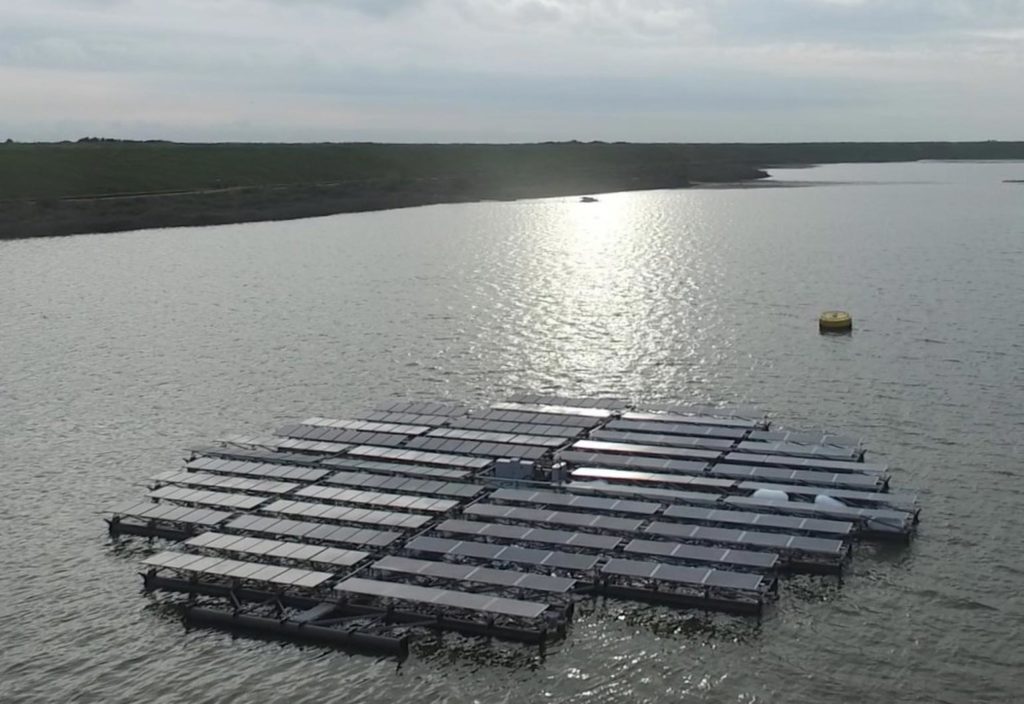A utility company in the Netherlands is working on a large installation of floating solar panel islands that change their orientation to catch the sun.
In a bid to save space and limit the environmental impacts on land, some large-scale renewable energy projects are setting their sights on islands of solar panels in still water bodies such as lakes and reservoirs.
The solar arrays are fixed to a buoyant structure that allows them to sit above the water’s surface.
An added benefit is that the water cools the solar panels, which in turn provide shade to the water body, lessening evaporation.
One project that is gaining attention is Dutch water company PWN’s installation of 73,500 solar panels grouped into 15 solar islands in the Andijk reservoir, with a total output of 25 MW. PWN will also install a second floating solar project at a second site near Amsterdam. Together, the company estimates the floating solar panels will generate enough power for 10,000 homes.
The Netherlands sees floating solar technology as an opportunity to take advantage of the country’s abundant shallow inland water resources. To this end, the Dutch Foundation for Applied Water Research recently released a guide for licensing the technology, which examines the effects on water quality and the aquatic ecosystem.
Catching the light
There are larger installations of floating solar panels around the globe. The biggest one is in China, which boasts a power output of 40 MW. What sets PWN’s Andijk project apart is the ability of the solar islands to reposition themselves in order to capture the maximum amount of sunlight as the day progresses.
The company claims the Andijk reservoir will host the world’s largest installation of sun-tracking floating solar. PWN told PV Magazine that the ability to follow the sun would increase the efficiency of the installation by about 30 per cent.
According to Arnoud van Druten, the managing director of Netherland-based solar panel supplier Floating Solar, the sun-tracking system consists of three anchoring buoys connected by a cable that both turns the solar island to face the sun and keeps it intact.
“You can have two options: one is tracking automatically to the light. But because the position of the sun is not expected to change too much in the coming years, an algorithm can be easily programmed,” van Druten told The Guardian.
Van Druten added that because of the severe environment at the reservoir, the installation also has the ability to reposition itself to minimise damage from extreme weather.
“If an island is under severe pressure due to wind or storms, it moves itself automatically … so the wind and waves travel easily through the island,” he explained, adding that the system had survived winds of up to 60 mph (96 km/h) during testing without the need to change position.
The first phase of the project, which will consist of three islands, is expected to be complete in November. According to van Druten, the project will not adversely affect the quality of the drinking water.
According to PWN director Joke Cuperus, this installation is part of the company’s goal to become energy neutral and generate 100 per cent of its power sustainably.
